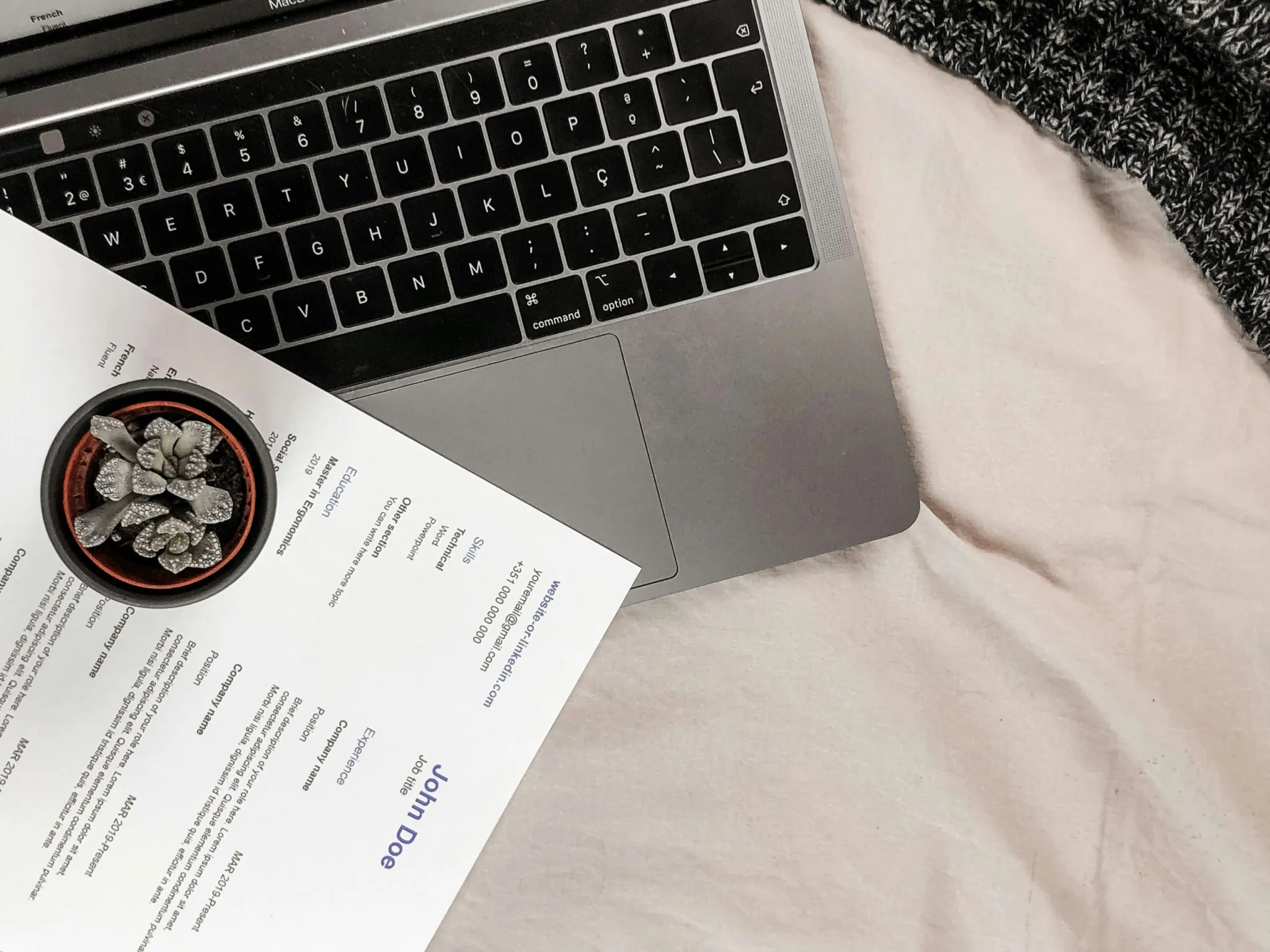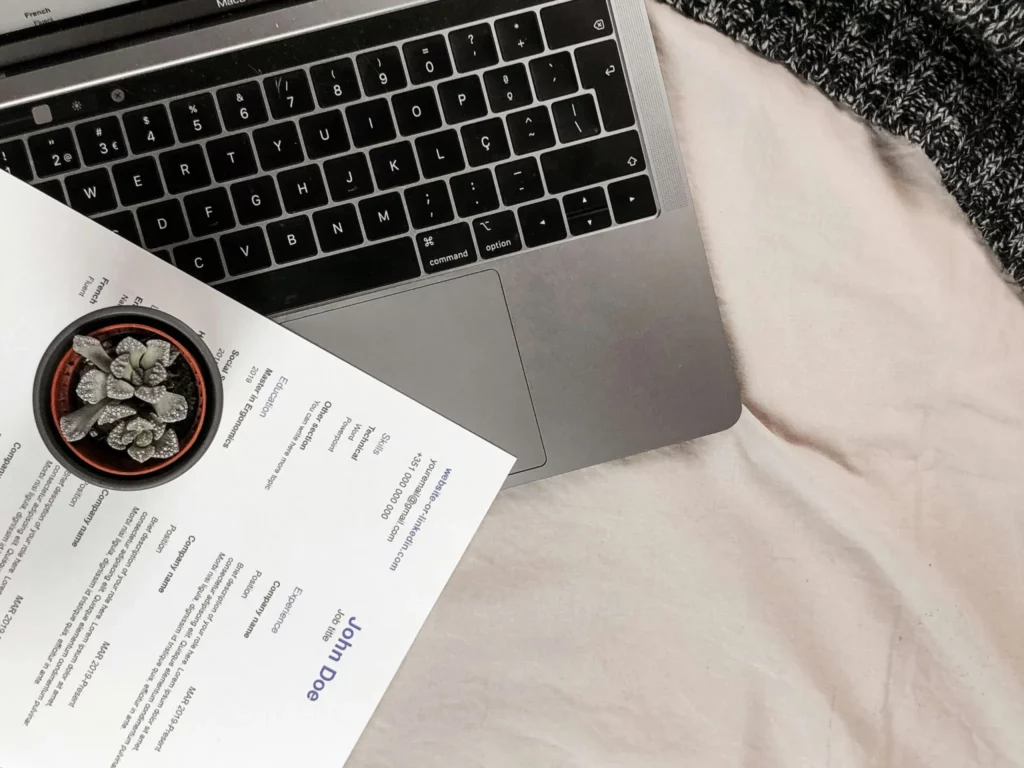Unlocking Success in the Canadian Job Market: Crafting Your Tailored Resume
Your resume is your ticket to the Canadian job market, and we’re here to guide you through the process. Whether you’re just starting out or looking to advance your career, creating a solid resume is key to landing interviews and scoring that dream job.
In this guide, we’ll break down the essentials of crafting a Canadian resume in simple terms. No fancy jargon or complicated language here—just straightforward advice to help you put your best foot forward in your job search whether you are just out of college as a former international student or an experienced hand. There are plenty of job opportunities out there, and so are various websites to help us apply. The trick is to be able to make a good first impression.
How should I get started?
Firstly, keep it simple. You don’t have to write everything that you’ve done at all your previous stints. Following are some tips to help you craft your resume:
Tailor Your Resume to the Job: Customize your resume for each job application by highlighting the skills, experiences, and achievements most relevant to the specific job role or position you’re applying for.
Choose the Right Format: Select a format that best highlights your strengths and experiences. Common formats include reverse chronological, functional, and combination/hybrid resumes (more on this below).
Use a Clear and Professional Layout: Ensure your resume is well-organized and easy to read. Use clear headings, bullet points, and consistent formatting throughout.
Include Relevant Contact Information: Provide your name, phone number, email address, and optionally your LinkedIn profile or personal website. Make sure your contact information is up-to-date and professional.
Write a Compelling Summary or Objective: Include a brief summary or objective statement at the top of your resume that highlights your key qualifications and career goals.
Highlight Your Achievements: Focus on quantifiable achievements and accomplishments rather than simply listing job duties. Use action verbs and specific examples to demonstrate your contributions.
Emphasize Transferable Skills: Highlight transferable skills that are relevant to the job you’re applying for, even if they were acquired in a different context or industry.
Include Keywords: Incorporate relevant keywords and phrases from the job description into your resume to ensure it gets noticed by Applicant Tracking Systems (ATS) and hiring managers.
Provide Concise Descriptions: Keep your descriptions clear and concise, focusing on the most important information. Use bullet points to break up text and make it easier to read.
Quantify Your Accomplishments: Whenever possible, quantify your achievements with numbers, percentages, or other measurable metrics to demonstrate the impact of your work.
List Your Education and Training: Include your educational background, degrees, certifications, and any relevant training or professional development courses.
Proofread Carefully: Thoroughly proofread your resume for spelling, grammar, and formatting errors. Consider asking a friend or mentor to review it as well.
Be Honest and Authentic: Always be truthful and accurate in your resume. Avoid exaggerating or embellishing your qualifications or experiences.
Keep It Up-to-Date: Regularly update your resume with new experiences, skills, and achievements as they occur throughout your career.
Cover letter: A cover letter serves as an essential complement to your resume, providing an opportunity to expand on key points and make a personalized pitch to potential Canadian employers.
Include Volunteer Work: This can go a long way in establishing your credentials that you are more than just a sum total of all your relevant experience at your day job. Unpaid work experience, too, counts.
LinkedIn profile: Include a link or a QR code that helps the potential employer to simply check your LinkedIn profile. It also gives them an opportunity to check your posts and comments that you’d have left on the site. If you have your own website that chronicles your online portfolio of work, all the better.
How should I tailor my resume for AI tools to shortlist me?
Job seekers, beware. As AI becomes ubiquitous, applications such as Applicant Tracking System (ATS) are becoming common in most countries. ATS is a software application that helps Canadian employers and recruiters manage the recruitment and hiring process more efficiently. ATS systems are used by organizations to streamline the process of sourcing, screening, tracking, and managing job applications.
Creating a resume optimized for AI involves using specific formatting, keywords, and structure to increase the likelihood that automated systems can accurately parse and extract relevant information.
Here are some tips:
- Use Standard Section Headings: Employ common resume section headings such as “Education,” “Experience,” “Skills,” etc. This helps AI algorithms recognize the different parts of your resume.
- Choose a Clear Font and Layout: Stick to standard fonts like Arial, Calibri, or Times New Roman, and avoid complex layouts or designs that may confuse AI parsers.
- Include Keywords from the Job Description: Tailor your resume to include keywords and phrases from the job description you’re applying for. These are often the terms that AI algorithms are programmed to search for.
- Use Bullet Points: Present your information in bullet points rather than long paragraphs. This makes it easier for AI systems to identify key points and extract relevant details.
- Quantify Achievements: Where possible, quantify your achievements using numbers, percentages, or other measurable metrics. This makes your accomplishments more easily recognizable to AI parsers.
- Standardize Dates and Formats: Ensure consistency in how you format dates, job titles, and other information throughout your resume. Consistent formatting helps AI systems accurately interpret your data.
- Avoid Graphics and Images: While visually appealing, graphics and images can confuse AI parsers. Stick to text-based content to ensure your resume is easily scannable by automated systems.
- Include Relevant Skills: Highlight your skills and competencies prominently in a dedicated “Skills” section. Use industry-standard terminology to describe your abilities.
- Provide Detailed Descriptions: For each job posting or project listed, provide detailed descriptions of your responsibilities, accomplishments, and contributions. This helps AI systems understand the scope of your experience.
- Use Standard File Formats: Save your resume in a common file format such as PDF or DOCX. Avoid formats that may not be compatible with certain AI parsing tools.
Indeed it’s important not to sound machine-like. Your resume will ultimately be read by the recruiter once it’s short-listed. But to get to a human, these days, you need to fashion the text such that it can be selected in the first place.
Pro tip: Quantify your resume to the extent possible.
Quantifying accomplishments in your resume is a powerful way to demonstrate your impact and effectiveness in previous roles. Here are some tips on how to effectively quantify your achievements:
- Use Numbers and Metrics: Whenever possible, include specific numbers, percentages, or other measurable metrics to quantify your accomplishments. This could include sales figures, revenue generated, cost savings, time saved, percentage improvements, project completion times, etc.
- Focus on Results: Highlight the outcomes and results of your actions rather than just listing responsibilities or tasks. Canadian Employers, much like any other, are interested in what you achieved and how you contributed to the success of your team or organization.
- Provide Context: Provide context for your achievements to help the reader understand the significance of your contributions. For example, explain the size of the team or project, the scope of your responsibilities, or any challenges you overcame.
- Use Action Verbs: Begin each bullet point describing your accomplishments with strong action verbs to convey a sense of initiative and achievement. For example, “Increased sales by 30%,” “Implemented cost-saving measures resulting in $50,000 annual savings,” or “Led a team that reduced project completion time by 20%.”
- Highlight Leadership and Impact: If you held leadership roles or managed teams, quantify the impact of your leadership by describing team achievements, improvements in productivity, employee retention rates, etc.
- Compare Before and After: When possible, compare the before and after states to illustrate the impact of your actions. For example, “Reduced customer wait times from 10 minutes to 5 minutes,” or “Improved website conversion rate from 2% to 5%.”
- Use Industry Benchmarks: If applicable, compare your achievements to industry benchmarks or standards to provide context and demonstrate your performance relative to industry norms.
- Be Honest and Specific: Ensure that the numbers and metrics you use are accurate and truthful. Avoid vague or exaggerated claims, and provide specific details that can be verified if necessary.
- Prioritize Relevant Accomplishments: Tailor your quantified accomplishments to the specific job you’re applying for, focusing on those that are most relevant to the position and demonstrate your suitability for the role.
- Edit: Finally, carefully review your resume to ensure that your quantified accomplishments are clear, concise, and effectively communicated. Ask for feedback from trusted colleagues or mentors to ensure that your achievements are appropriately highlighted.
How do I get started? What are some of the popular Canadian resume formats?
Typically, in Canada, following are the three commonly used resume formats which you can consider based on your role and experience.
Reverse chronological resume
A reverse chronological resume is a common type of resume format used in Canada, as well as in many other countries. In this format, you list your work experience and educational achievements in reverse chronological order, meaning you start with your most recent or current position and work backward. Here’s how a reverse chronological resume is typically structured:
Contact details: Include your name, phone number, email address, and optionally your home address.
Resume Objective or Summary: This section provides a brief overview of your career goals, skills, and experience. It’s optional but can be helpful in highlighting your strengths.
Work Experience: List your work history starting with your most recent or current job and working backward. Include the following details for each position:
- Job title
- Company name
- Location (city, province)
- Dates of employment (month and year)
- Responsibilities and achievements in bullet-point format
Education: List your educational background in reverse chronological order. Include the following details for each qualification:
- Degree or diploma earned
- Institution name
- Location (city, province)
- Graduation date (month and year)
Skills: Highlight relevant skills that are applicable to the job you’re applying for. This section can include technical skills, soft skills, languages, certifications, and other qualifications.
Optional Sections: Depending on your background and the job you’re applying for, you may include additional sections such as:
- Awards and honors
- Professional affiliations
- Volunteer experience
- Publications or presentations
- References (note: it’s common to write “References available upon request” rather than listing them directly)
When using a reverse chronological resume in Canada, it’s essential to tailor your resume to the specific job you’re applying for and ensure that it conforms to Canadian standards and conventions. This includes using Canadian spelling and grammar, if applicable, and being mindful of cultural norms and expectations within the Canadian job market.
Functional resume
A functional resume is another common type of resume format used in Canada, especially for individuals with non-traditional career paths, career changers, or those with major employment gaps. Unlike the reverse chronological resume, which focuses on listing work experience in chronological order, a functional resume highlights skills and qualifications while de-emphasizing specific job titles and dates of employment. Here’s how a functional resume is typically structured:
Contact Information: Include your name, phone number, email address, and optionally your home address.
Resume Objective or Summary: Provide a brief overview of your skills, qualifications, and career goals. This section should be tailored to the specific job you’re applying for.
Skills Summary: Highlight your key skills and qualifications relevant to the job you’re applying for. This section can include technical skills, soft skills, language proficiency, certifications, and other relevant qualifications.
Professional Experience: Instead of listing your work experience in reverse chronological order, group your experience into functional categories or skill sets. For each category, provide examples of how you demonstrated those skills, even if they come from different jobs or experiences. Focus on achievements and accomplishments rather than specific job titles.
Education: List your educational background, including degrees, diplomas, and certifications. Include the name of the institution, location, and graduation date.
A functional resume allows you to highlight your relevant skills and accomplishments, which can be particularly useful if you’re changing careers or have gaps in your employment history.
Hybrid resume
A combination or hybrid resume is a versatile resume format that combines elements of both the reverse chronological and functional formats. It allows you to showcase your skills and qualifications while also providing a chronological work history. This type of resume is commonly used in Canada and can be particularly effective for individuals with diverse experiences or career changes.
How is a CV different from a resume?
The terms “CV” (Curriculum Vitae) and “resume” are often used interchangeably, but there are some key differences between the two documents, particularly in terms of length, content, and usage. Here’s a breakdown of the main differences:
Length: A CV is typically longer than a resume and can range from two or more pages, especially for individuals with extensive academic or professional experience. A resume is typically shorter, usually limited to one or two pages, and focuses on summarizing relevant skills, experiences, and qualifications concisely.
Content: A CV includes a comprehensive overview of a person’s academic background, research, publications, presentations, grants, honors, awards, and professional experiences. It may also include details such as teaching experience, academic projects, and academic affiliations.
Resume: A resume provides a concise summary of a person’s work experience, skills, qualifications, and relevant accomplishments. It typically focuses on professional experiences and achievements related to the specific job or industry.
Purpose: CVs are commonly used in academic, research, and scientific fields, as well as for certain international job applications. They are designed to provide a detailed record of an individual’s professional and academic achievements over time.
Resume: Resumes are more commonly used in the United States and Canada for job applications in most industries. They are tailored to specific job openings and are intended to highlight a candidate’s qualifications and suitability for a particular role.
Format: CVs tend to follow a standardized format and include specific sections such as education, research experience, publications, presentations, awards, and professional experience. Resumes may vary more in format and structure, but they typically include sections such as contact information, summary or objective, work experience, education, skills, and optionally, additional sections like certifications, volunteer experience, or professional affiliations.
Whereas both CVs and resumes serve the purpose of presenting a person’s qualifications and experiences, they differ in terms of length, content, usage, and regional conventions.
What are some of the common mistakes to avoid while creating a resume?
When writing a resume, it’s important to avoid certain common pitfalls that can detract from its effectiveness and impact. Here are some things to avoid:
Spelling and Grammar Errors: Carefully proofread your resume to ensure there are no spelling or grammar mistakes. Errors can make you appear careless or unprofessional.
Excessive Length: Keep your resume concise and focused on the most relevant information. Avoid including unnecessary details or lengthy paragraphs that may overwhelm the reader.
Unprofessional Email Addresses: Use a professional email address for job applications. Avoid using personal or unprofessional email addresses that may create a negative impression.
Generic Objective Statements: Avoid generic or vague objective statements that don’t provide meaningful information about your career goals or qualifications. Instead, use a targeted summary or objective that highlights your specific skills and objectives.
Irrelevant Information: Focus on including information that is relevant to the job you’re applying for. Avoid including irrelevant work experience, hobbies, or personal details that don’t add value to your application.
Overused Phrases and Clichés: Avoid using clichéd phrases and buzzwords that don’t provide meaningful information. Instead, use specific examples and concrete achievements to demonstrate your qualifications.
Lack of Keywords: Make sure your resume includes relevant keywords and phrases from the job description. This will help ensure that your resume gets noticed by Applicant Tracking Systems (ATS) and hiring managers.
Unexplained Employment Gaps: If you have gaps in your employment history, be prepared to explain them in your resume or cover letter. Avoid leaving gaps unexplained, as this may raise questions or concerns for prospective employers.
Inconsistent Formatting: Maintain a consistent format and style throughout your resume. Use the same font, spacing, and formatting for headers, bullet points, and other elements to create a professional and polished appearance.
Exaggerations or False Information: Be honest and truthful in your resume. Avoid exaggerating your qualifications or experiences, as this can damage your credibility if discovered by employers.
Including References: It’s not necessary to include references on your resume. Instead, simply state “References available upon request.” Avoid listing references or contact information unless specifically requested by the employer.
Using Templates Without Customization: While resume templates can be helpful, avoid using them without customization. Tailor your resume to each job application and make sure it accurately reflects your skills, experiences, and qualifications.
Information: Do not include any details that give away your political affiliation, religion, ethnicity, sexual orientation, immigration status, picture and marital status. These are not relevant for you to get a job.
By avoiding these common mistakes, you can create a resume that effectively showcases your strengths and qualifications, increasing your chances of success in the job search process.




